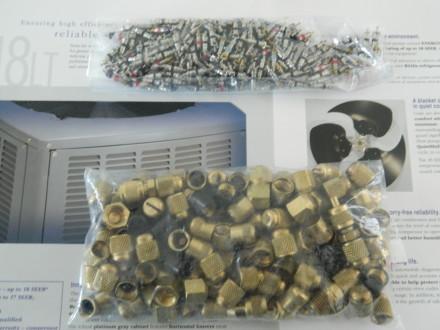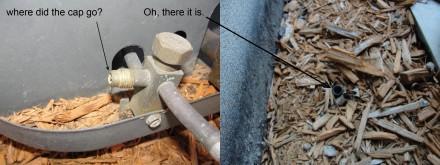Warm weather has finally arrived in Minnesota, and I've decided it's safe to pack my kids snow pants away for a few month. Woo hoo! Earlier this year I mentioned three simple AC maintenance tips for homeowners; have you taken care of these items already?
While those were some basic things that homeowners can take care of, there are many more items that a professional HVAC tech will do for your air conditioner to help it cool your house properly. When an HVAC tech performs a maintenance check on an air conditioner, they'll have a long list of stuff to go over.
Mark Jerde of Rightmark agreed to share his company's AC maintenance checklist:
- Measure outside ambient air temp.
- Check suction line PSI and temp.
- Check discharge line PSI and temp.
- Check for refrigerant leaks and proper refrigerant levels on the high and low pressure side. Repair any leaks, add refrigerant as needed.
- Check over condenser coils and clean if needed. Keep unit clear of any debris.
- Attempt to straighten any bent fins on coil if allowed.
- Check fan blades for damage and clean blades if needed.
- Check condenser motor amperage draw.
- Lubricate fan motors and bearings if applicable.
- Check belts for wear and proper tension if available, replace if needed.
- Check all wiring, electrical connections, contactors, poles, relays and capacitors for wear, cleanliness and proper operation.
- Check suction pipe insulation and cover or repair if needed.
- Check air filter for cleanliness
- Check evaporator coil and clean if needed.
- Check condensate pan and drain line and clean or replace if needed.
- Check blower motor amperage draw.
- Visually inspect blower wheel and clean if applicable.
- Check thermostat for proper operation and calibration.
- Visually inspect ductwork and seal properly if applicable.
- Measure supply and return air temp.
Adding refrigerant when needed is probably the most important item on this list, and it's the one that may directly affect a homeowners pocketbook.

So where does the refrigerant go?
Air conditioners often leak very small amounts of refrigerant continuously, making it worth having them professionally serviced every few years. One of the worst offenders for refrigerant leaks is the Schrader stem on the service valve. Most condensers from the last ten years come with a plastic core cap for the service valve, which will almost always leak when the Schrader stems are leaking.

The fix is to have the plastic caps replaced with brass caps with a compressionable o-ring. These caps get tightened down with a wrench. The photo below shows a bag of new brass caps. According to Mark, it's a best practice to replace the plastic factory caps on every new installation and every service call.

If the caps are completely missing, the odds of refrigerant leaking go up. The photos below come from the first air conditioner I turned on this year, which had missing caps at the service valves. As it turned out, the air conditioner wasn't cooling at all.

If your air conditioner seems to be taking forever to get your house to a comfortable temperature, hire a professional HVAC tech to service it. This is one of those service calls that could pay for itself through lower electric bills. Just watch out for those pre-paid coupon deals with unbelievably low prices; you get what you pay for. More on that topic next week.

